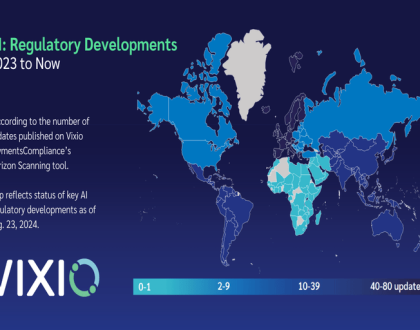Crypto Wallets and the Alarming Rise in Digital Theft

Many individuals are increasingly embracing cryptocurrency as a viable investment, yet this growing trend is accompanied by a concerning uptick in digital thefts targeting crypto wallets. As I explore the intricacies of this phenomenon, I want to highlight why understanding the vulnerabilities in your digital wallet is crucial for your financial security. You may be excited about entering the crypto space, but it's imperative to arm yourself with knowledge on how to protect your assets from malicious actors who exploit common weaknesses.
Understanding Crypto Wallets
To navigate the world of cryptocurrency effectively, it's vital to understand what crypto wallets are. These wallets serve as digital repositories that store your public and private keys, which are critical for facilitating transactions in the decentralized world of blockchain technology. They allow you to send, receive, and manage your digital assets while maintaining a secure interface to interact with various cryptocurrencies.
Types of Crypto Wallets
To make an informed choice about which wallet to use, I believe it's crucial to explore the different types available. Each wallet class offers unique features and security levels:
- Hardware Wallets
- Software Wallets
- Web Wallets
- Mobile Wallets
- Paper Wallets
The selection of a wallet type can significantly impact your overall security and ease of access.
| Type of Wallet | Description |
| Hardware Wallets | Physical devices that securely store your keys offline. |
| Software Wallets | Applications installed on your device for managing keys. |
| Web Wallets | Accessed via a browser, making them convenient but riskier. |
| Mobile Wallets | Apps that allow mobile access to your cryptocurrency. |
| Paper Wallets | Physical printouts of your keys for offline storage. |
How Crypto Wallets Work
Understanding how crypto wallets work is crucial for safeguarding your digital assets. They operate by managing your keys, allowing you to interact seamlessly with blockchain networks.
This interaction is facilitated through a complex system of cryptographic protocols that validate transactions. When you send cryptocurrency, your wallet uses your private key to generate a digital signature, which is then sent to the blockchain to authorize the transaction. Conversely, when receiving funds, you share your public key, ensuring that the transaction is securely directed to your wallet. By grasping these processes, you can take the necessary precautions to protect your assets from potential threats.
The Landscape of Digital Theft
It is crucial to understand the ever-evolving landscape of digital theft, particularly within cryptocurrency. As digital assets grow in popularity, so too do the tactics employed by cybercriminals. This landscape is marked by a variety of threats that target unsuspecting users and their digital wallets, necessitating constant vigilance and informed security practices. Understanding these dangers is the first step in protecting your digital assets.
Common Methods of Theft
Any seasoned crypto investor knows that digital theft can happen in a multitude of ways. From phishing attacks designed to trick you into revealing your private keys to malware that steals wallet credentials, the methods are as diverse as they are sophisticated. By recognizing these common tactics, you can better safeguard your investments and enhance your overall security posture.
Recent Trends in Cybercrime
Methods of cybercrime are shifting and becoming more advanced, making it important to keep your defenses up-to-date. A notable trend is the rise of decentralized finance (DeFi) hacks targeting smart contracts and unregulated exchanges. Furthermore, ransomware attacks have also surged, wherein hackers lock access to your data until a ransom is paid, often in cryptocurrency. As cybercriminals adapt to changing technologies, you must be proactive to ensure your assets remain secure.
To counteract these rising threats, I recommend implementing multifactor authentication, regularly updating your software, and staying informed about the latest security practices. It's also wise to diversify your storage methods, using both hot and cold wallets, to minimize risk. By being proactive and vigilant, you can reduce your chances of falling victim to an attack and protect your valuable digital assets from the alarming rise in digital theft.
Security Risks Associated with Crypto Wallets
Any discussion about crypto wallets must address the inherent security risks they carry. Unlike traditional banking systems, cryptocurrency wallets operate in a decentralized environment, making them more susceptible to various threats. With the value of cryptocurrencies on the rise, hackers and fraudsters are honing their methods to breach wallets, leading to significant financial losses for users. It's necessary to understand these risks if you want to protect your digital assets effectively.
Vulnerabilities in Wallet Technology
Associated with the growth of cryptocurrency are significant vulnerabilities present in wallet technology. Developers are tasked with creating secure software; however, coding errors and oversight can lead to exploitable weaknesses. Some wallets do not employ the latest security features, leaving users open to attacks. As I explore the landscape of wallet technology, I find that it is crucial for you, as a user, to stay informed about the security standards of the wallets you use.
Human Errors and Social Engineering
An often overlooked aspect of security risks in cryptocurrency wallets is the role of human error and social engineering. Even the most secure wallet can be compromised if users fall victim to phishing attacks or make mistakes in managing their private keys. Your behavior online significantly influences how well you can safeguard your digital assets. Simple missteps, like sharing sensitive information or failing to use two-factor authentication, may expose you to theft.
To mitigate the dangers posed by human errors and social engineering, it's crucial to educate yourself about safe online practices. Always scrutinize the sources of emails and messages regarding your wallet or investments before responding. Make it a habit to use only official websites and enable all available security features, such as two-factor authentication. By being vigilant and cautious, you significantly reduce the likelihood of falling victim to these common scams while protecting your cryptocurrency assets.
Preventive Measures for Crypto Users
Despite the growing risks associated with cryptocurrency, there are effective preventive measures that you can adopt to protect your digital assets. Implementing strong security practices and staying informed about potential threats are crucial steps every crypto user should take. I recommend regularly updating your wallet software and using two-factor authentication to add an extra layer of protection. Additionally, beware of phishing scams and always double-check the URLs before entering sensitive information. By being proactive, you can significantly reduce the risk of becoming a victim of digital theft.
Best Practices for Wallet Security
With the prevalence of cyber threats, adhering to best practices for wallet security is crucial. Always use hardware wallets for larger amounts and keep your private keys offline whenever possible. I also advise you to create complex passwords and change them regularly, as well as avoid sharing wallet details with anyone. Furthermore, it's wise to backup your wallet information securely in case of device failure. By following these best practices, you can enhance the security of your cryptocurrency investments.
Tools and Resources for Enhanced Protection
Tools designed for enhanced protection can significantly bolster your digital security. I encourage you to explore reliable antivirus software, password managers, and encrypted communication apps to safeguard your cryptocurrency activities. Additionally, leverage resources like security community forums and educational platforms to stay updated on the latest security trends. These tools can provide you with both technical and community support in your quest for security.
Enhanced protection of your crypto assets takes more than just basic security measures; it involves utilizing available tools effectively. For example, password managers can help you generate and store strong passwords, while antivirus software protects your devices from malware designed to steal your credentials. You might also consider using privacy-focused VPNs when accessing your wallet or trading platforms, as they encrypt your internet connection. By taking advantage of these tools and resources, you're better equipped to shield your digital assets from potential threats.
The Role of Regulations in Combatting Theft
Not all cryptocurrencies exist in a regulatory vacuum, as more governments worldwide are beginning to understand the importance of establishing frameworks to protect investors and prevent theft. These regulations aim to create a safer environment for users, making it harder for criminals to operate unimpeded while also fostering trust in the digital asset space.
Current Regulations Affecting Crypto
For many crypto enthusiasts, current regulations can feel like a double-edged sword. While they provide important protections for users, the varying laws across jurisdictions can create confusion and hinder innovation. Established regulations, such as the Financial Action Task Force (FATF) guidelines and local Anti-Money Laundering (AML) laws, set the groundwork for compliance, forcing exchanges and wallet providers to adopt stricter security measures.
Future Prospects for Regulation
Regulations surrounding cryptocurrencies are likely to evolve as the industry matures. Policymakers are becoming increasingly aware of the need for cohesive international standards that can address digital theft effectively while allowing innovation to flourish. As I see it, we'll likely witness more comprehensive regulations that will further protect consumers while simultaneously enabling the growth of decentralized finance (DeFi) and other crypto applications.
Combatting digital theft in the cryptocurrency space will require not only stricter regulations but also collaboration among regulators, law enforcement, and industry stakeholders. By establishing more comprehensive regulatory frameworks, we can create an environment where security is paramount, and users are informed about their rights and responsibilities. This collaborative approach can turn regulatory guidelines into effective tools that deter thieves while inspiring confidence in cryptocurrency investment.
The Impact of Digital Theft on the Crypto Market
Keep in mind that digital theft significantly undermines trust in the cryptocurrency market, leading to increased volatility and skepticism from both investors and the general public. The alarming frequency of high-profile thefts raises concerns about the security of crypto assets, ultimately impacting market stability and investor confidence. With growing cybersecurity threats, one must remain vigilant about safeguarding their digital investments.
Market Reactions to High-Profile Theft
An immediate consequence of high-profile thefts is the dramatic market reaction, often characterized by sharp declines in cryptocurrency prices. When notable hacks occur, I notice that fear spreads, causing investors to sell their holdings en masse. This selling frenzy not only affects the targeted platforms but can also trigger wider panic across the entire crypto market, leading to significant financial losses for many.
Long-Term Implications for Investors
Digital theft can have profound long-term implications for investors in the crypto space, creating a landscape fraught with risk and uncertainty. As thefts become more frequent, you may find yourself reassessing your investment strategies due to heightened concerns about asset security.
Impact studies suggest that ongoing thefts could lead to stricter regulations and a more cautious approach to crypto investing. Over time, this shift may normalize the perception of cryptocurrencies, prompting you to seek out safer, more established platforms or adopt additional security measures. This evolving atmosphere not only puts a premium on trust but also necessitates that you stay informed about the latest security protocols to protect your digital assets effectively.
To wrap up
Following this discussion, I strongly urge you to prioritize the security of your crypto wallets. As digital theft continues to rise alarmingly, it's important to adopt best practices, such as using hardware wallets, enabling two-factor authentication, and staying informed about potential vulnerabilities. By taking these steps, you can safeguard your investments and navigate the exciting yet perilous world of cryptocurrency with greater confidence. Your diligence today may very well protect your assets tomorrow.
FAQs
What are the different types of crypto wallets?
Crypto wallets include hardware, software, web, mobile, and paper wallets. Each offers varying security and accessibility.
How can I protect my crypto wallet from theft?
Use hardware wallets for offline storage, enable two-factor authentication, and stay updated on security measures.
What is the role of regulations in cryptocurrency security?
Regulations help protect investors by enforcing stricter security standards, preventing fraud, and fostering trust in the market.
What is phishing in the context of cryptocurrency?
Phishing attacks involve tricking users into revealing sensitive information, such as private keys, through fake websites or emails.
Why is two-factor authentication important for crypto wallets?
Two-factor authentication adds an extra layer of security, reducing the risk of unauthorized access to your crypto wallet.
Recommended Posts

Sportingtech Boosts Security with Continent 8
October 4, 2024

Malta’s AML Measures in Online Gambling
October 4, 2024

AI Regulation in Payments and Gambling
October 2, 2024




